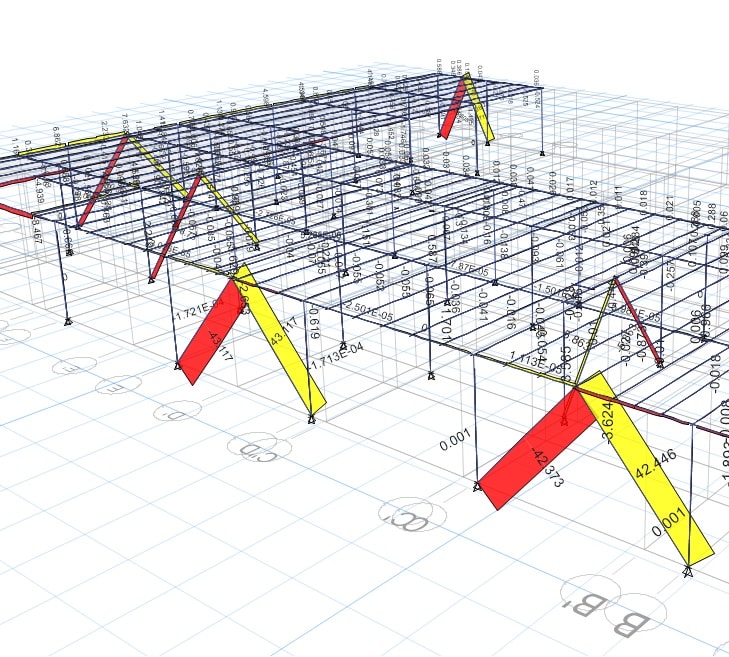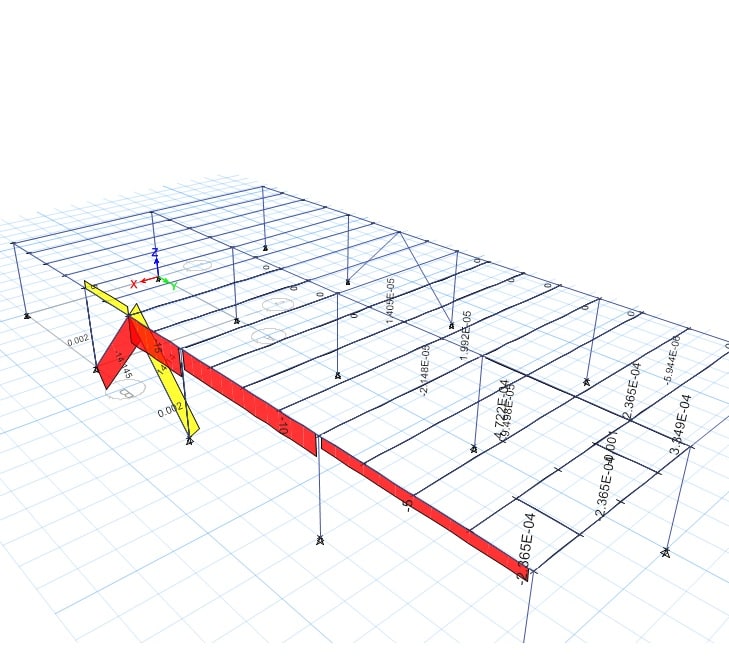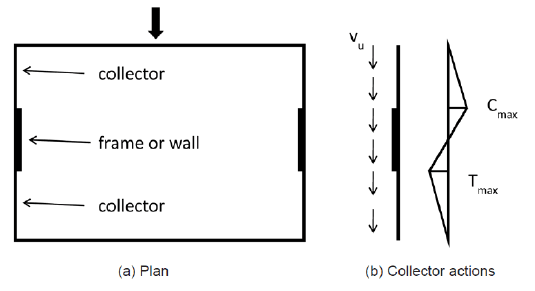hello eng-tips gang hope everything is in good order and you've had wonderful holidays
happy new year to all
i am here again to ask for your input on this problem
i modeled up a steel structure in software(etabs) and was analyzing lateral loads on said structure and
found the some results to be as below

as you can see the chevrons are carrying about 40kips
but the beam sharing the joint with the chevron is carrying around 5kips
i was expecting to see something more like this image below with lateral building up until it reaches
the chevron and then some trig ratio to get to the chevron force

second example is a bit simplified i was just testing to see what would happen
anyways would like to hear your opinion on this matter
thanks
happy new year to all
i am here again to ask for your input on this problem
i modeled up a steel structure in software(etabs) and was analyzing lateral loads on said structure and
found the some results to be as below

as you can see the chevrons are carrying about 40kips
but the beam sharing the joint with the chevron is carrying around 5kips
i was expecting to see something more like this image below with lateral building up until it reaches
the chevron and then some trig ratio to get to the chevron force

second example is a bit simplified i was just testing to see what would happen
anyways would like to hear your opinion on this matter
thanks

